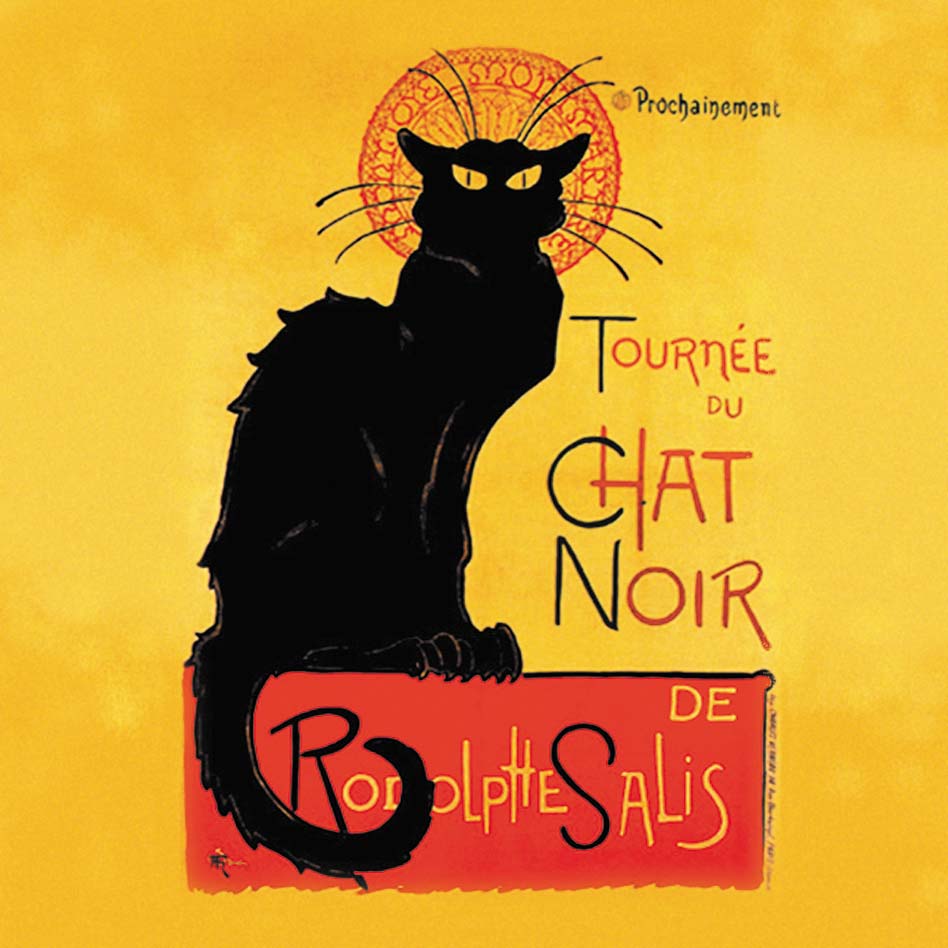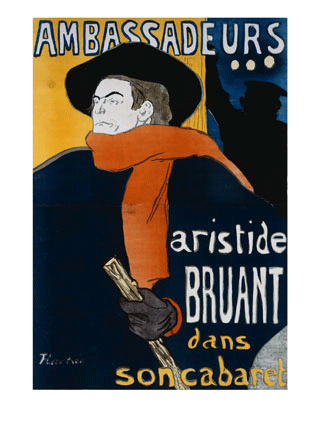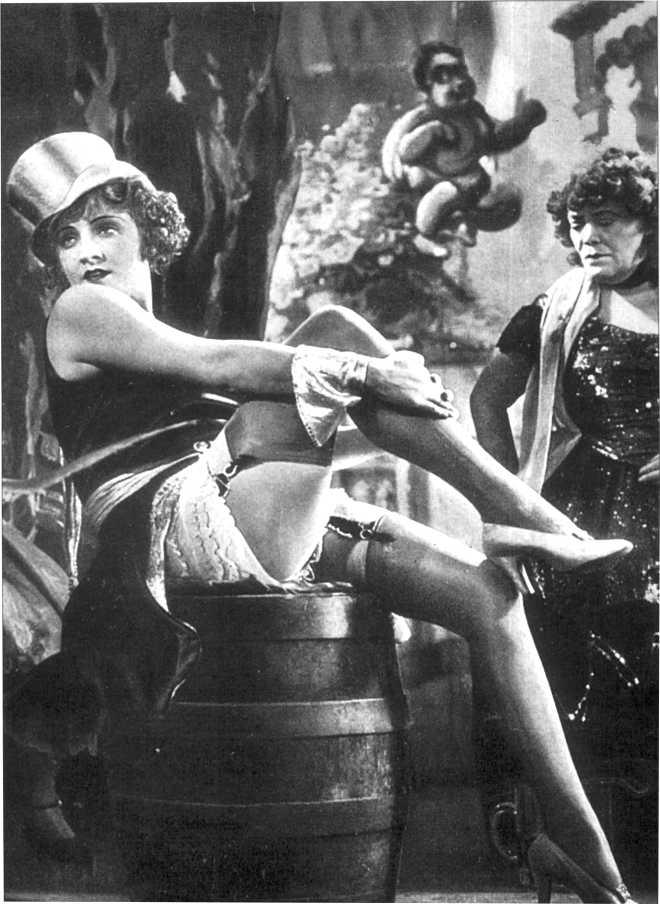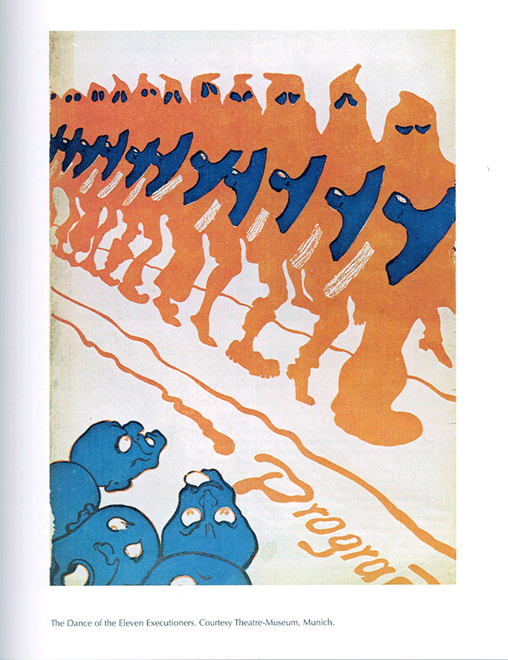German 588: European Literary-Political Cabaret
Detail of a poster by Steinlein advertising |
European Literary-political cabaret is an art form closely connected with major trends in society and the arts in Europe since the end of the nineteenth and throughout the twentieth century. Early twentieth century cabaret, particularly in Germany but also in other countries, viewed itself as part of a wider movement to improve the quality of popular entertainment and to attract new and broader audiences. This course explores performance texts as well as theoretical and practical discussions of cabaret by writers, directors and critics which appeared in journals, newspapers and other venues. Detailed attention to texts which were actually read or sung in cabarets will be accompanied by an exploration of the relationships between cabaret and modernism, and of the cabaret’s role in the movement toward emancipation from traditional and conventional modes of thought and behavior during the twentieth century. We will also discuss various perceptions of the social and political functions of cabaret during the Weimar Republic. |
Aristide Bruant |

Otto Dix: Großstadt-Triptych
COURSE OVERVIEW
|
This course explores the development of European literary-political cabaret from its origins in France in the 1880's to its most recent developments in Western and Eastern Europe since the end of the Cold War and the reunification of Germany. We will pay particular attention to the role played by cabaret in discussions of “high” and “low” art at the beginning of the twentieth century, its later development as a medium for political protest, social commentary and literary satire, and its connections with and influences on Modernism, the Avantgarde, Expressionism, the Epic Theatre of Bertolt Brecht and Agitprop Theater. The course will also explore the musical aspects of cabaret, including the Cabaret Chanson in France, Germany and other countries, and the connections between cabarets, café-concerts, and musical revues in the late nineteenth and early twentieth centuries. By its very nature, cabaret brings together diverse elements of European culture including politics, society, literature, theater, music, art and dance. You are encouraged to explore these interconnections among cultural, historical, literary, and socio-political developments in Europe in the twentieth century. |
|
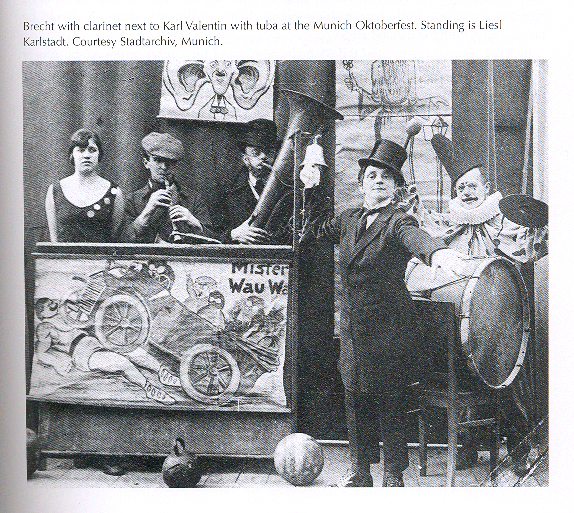
TEXTS
 |
SYLLABUS
|
Time |
Topic |
Reading |
|
First
Week |
The beginnings
and development of cabaret in France (Montmartre, Paris), |
Segel, Turn-of-the-Century Cabaret (TCC), Chap. 1: pp
1-83. |
|
Second
Week |
Cabaret
in Spain. Barcelona: Els Quatre
Gats. Pablo Picasso and cabaret. |
Segel,
TCC, Chap. 2: pp .85-118. McCully, El Quatre Gats, pp. 3-58. |
|
Third
Week |
Cabaret in
Germany during the Wilhelminian Empire. |
Chisholm, “Early Literary Cabaret and Modernism in Berlin,” In: Politics in German Literature, 117-131. |
|
Fourth
Week |
Related
forms of European cabaret at the turn of the century: Musical Revue, Variete, Tingeltangel. |
Jelavich, Berlin Cabaret, pp. 1-61. |
|
Fifth Week |
Cabaret in Austria (Die
Fledermaus, Das Nachtlicht) and Switzerland (Cabaret
Voltaire) |
Segel,
TCC, Chap. 4: pp. 183-219 |
|
|
Cabaret
in Russia and Poland |
Senelick,
Cabaret Performance, Chap. 3 (The Artistic Cabaret in Eastern Europe): pp.
136-184. |
|
Seventh
Week |
Cabaret after 1918: Sound and Smoke, The Wild Stage,
Cabaret Megalomania. |
Lareau,
pp. 23-125; Jelevich, pp. 62-84 |
|
Eighth
Week |
Music in the
Cabaret. |
Chisholm, “German Cabaret Songs in the Weimar Republic,” In: Dimensions, 258-268 |
|
Ninth
Week |
Cabaret
in Germany during the Third Reich. |
Hippen,
Kabarett im Dritten Reich, pp.
61-118 |
|
Tenth
Week |
Cabaret
in German concentration camps |
Jelevich, pp.
258-282 |
|
Eleventh Week |
German cabaret in exile: Switzerland,
Holland, Czechoslovakia, Belgium, Luxemburg, England, United
States. Satire against Hitler. Erika Mann’s |
Segel, TCC, Chap. 7: pp. 321-365. |
|
Twelfth
Week |
Postwar
cabaret in West Germany |
Appignanesi, pp.
171-187. |
|
Thirteenth Week |
Postwar
cabaret in East Germany |
Hösch, Kabarett von Gestern und Heute (selected passages |
|
Fourteenth Week |
European cabaret
since the end of the cold war. |
Gisela Oechelhäuser, Ed. Von der Wende
bis zum Ende – die Distel im scharfen Kanal (selected
passages) Selected newspaper reviews of cabaret performances in Germany |
|
Fifteenth Week |
Summary and Outlook: Common themes and forms. |
|
The Dance of the Eleven Executioners |
EVALUATION
|
University of Arizona Policy on Plagiarism:
Definition and Explanation in the University of Arizona On-line Catalog:
“What is Plagiarism?: http://www.gened.arizona.edu/eslweb/whatis.htm
Code of Academic Integrity: http://catalog.arizona.edu/policies/994/acacode.htm
It is defined there as “intentionally or knowingly representing the words or ideas of
another as one's own in any academic exercise.” See website for more details.
Special Needs:
Students with disabilities who require reasonable accommodations to fully participate in course activities or meet course requirements must register with the Disability Resource Center. ( http://drc.arizona.edu/ ). If you qualify for services through DRC, bring your letter of accommodations to me as soon as possible.
